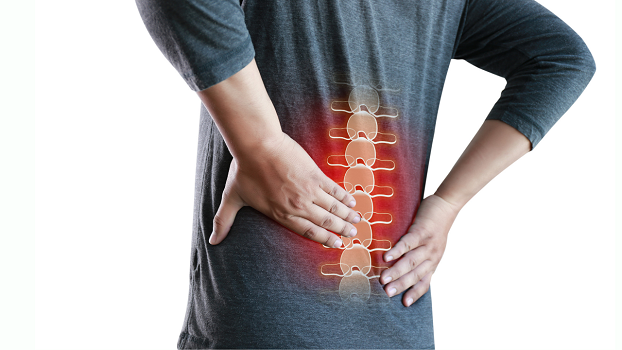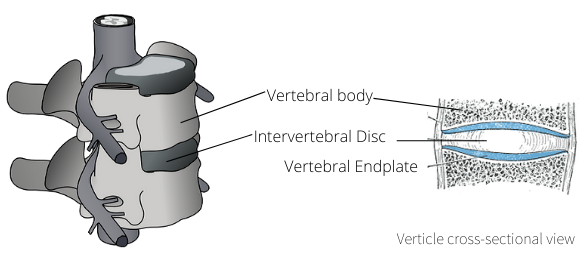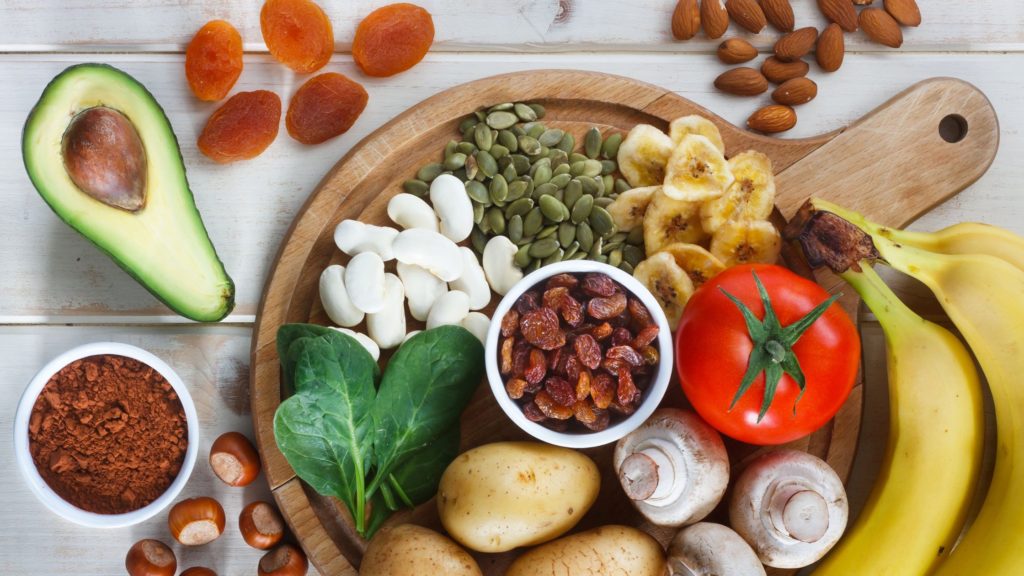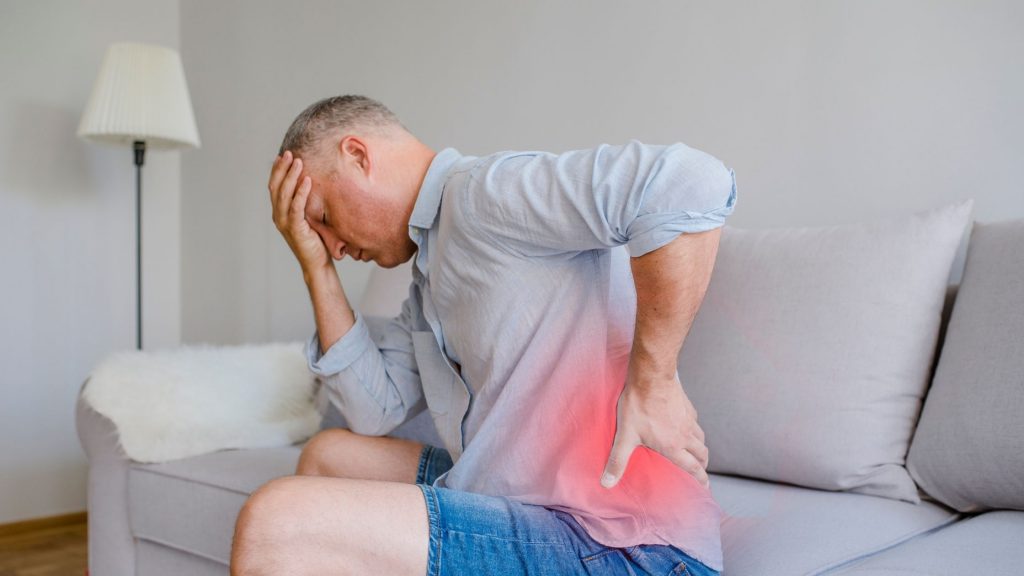Last updated on February 9th, 2023 at 06:33 pm

New research reveals the reason for unexplained low back pain that was unknown to scientists till now. The researchers at Johns Hopkins University School of Medicine1, China finds that the formation of Swiss-cheese like bone growth in spine cartilage is causing low back pain in the vast majority of the older age population.
The findings were published on an online journal Nature Communications reveals that age-related degeneration (swiss cheese bone) of spine cartilage of our low back results in overgrowth of the pain-sensing nerve that triggers low back pain.
Research may eventually help develop new treatments for low back pain that target abnormal nerve growth in the spine, especially older age sufferer not owing to strain or injury.
But, where is this spine cartilage present and what made researchers conclude that it may be reason for low back pain?
Table of Contents
Swiss-cheese bone growth in Spine cartilage as source of pain
Before we start, let me mention that Swiss cheese an edible cheese is porous that makes it very soft, as you can see in the figure.

We all might have experienced low back pain and roughly 80% of people worldwide suffer from it in their lifetimes, sometimes owing to strain or injury. But the vast majority of low back pain, the researchers say, emerges in the absence of injury, especially in older age.
Researchers were curious about the reason and source of such LBP that emerges in absence of injury or strain.
In experiments with genetically engineered and old mice, Johns Hopkins Medicine researchers say that the vast majority of low back pain in people may be rooted in an overgrowth of pain-sensing nerves into spinal cartilaginous tissue.
Spinal cartilage is actually termed as vertebral endplate, because they are present on the end of vertebral body.
Confused?? Okay, let me clear it.
Our spine is made up of numbers of vertebral body placed one over the another. Between each two consecutive vertebral body, there is a disc shaped jelly material known as intervertebral disc.
Like every movable joint surface in our body is lined by cartilage, our vertebral body also has cartilage lining on it’s both the upper and lower end that cushion the vertebral bones to protect them from the weight of the body. They are called vertebral endplate.

“The cartilage endplate is the cushion on a seat that makes it more comfortable. But, like similar tissue in knee and hip joints, it succumbs to wear and tear over time,” says Xu Cao, Ph.D., Lee Riley Professor of Orthopaedic Surgery and researcher in the Johns Hopkins Institute for Cell Engineering at the Johns Hopkins University School of Medicine.
Normally, there is no supply of pain-sensing nerve in the vertebral endplate.
These vertebral endplates normally does not have blood and pain-sensing nerve supply. “Cartilage does not typically have nerve and blood vessels. However, when cartilage becomes a porous bony structure with the growth of nerve fibers, it could be the source of back pain,” says Cao.
Research found swiss-cheese-like spine cartilage
The new experiments were designed to investigate whether a painful overgrowth of sensory nerves into the cartilaginous endplates in the spine could be the root of these unexplained cases.
In previous studies, Cao’s team had found that an aging or instable spine induces the cartilage endplates to change into porous bony structures that provide spaces for nerves to penetrate the dense structure of the bone.
Actually, a specialized cell type, called osteoclasts, creates the porous bone structure where the cartilage should be. Cao thought that perhaps the signaling molecule netrin-1 secreted by osteoclasts during this process invited abnormal nerve growth and the resulting back pain.
To study this idea, Cao and his team analyzed samples of the bony end plates of vertebrae from mice aged more than 20 months, the human equivalent of about 70–80 years old.
They analyzed tissue samples from the spines of old mice under the microscope, labeling the hole-building osteoclasts and nerve fibers with fluorescent tags.
Results were astonishing!!
Result
The researchers found that the soft, cartilaginous tissue in the mice’s spines became hardened and resembled diffuse bone with a Swiss cheese-like structure.
They also found that osteoclasts and nerve fibers were present in the same areas of vertebrae, suggesting that the osteoclasts could be signaling the nerve growth in some way, perhaps with netrin-1.
Also read: 4 stages of disc herniation: Symptoms & treatment
Experiment to prevent swiss-cheese bone growth
Next, the team designed an experiment to prevent the osteoclasts from producing the abnormal ‘Swiss-cheese’ bone growth and secreting netrin-1 to see if nerve growth in the cartilaginous tissue — and the accompanying pain — could be stopped.
They genetically engineered mice to lack the gene that codes for osteoclast formation, and performed a surgery on the mice to destabilize the joints between their vertebrae — mimicking similar instability seen in people with low back pain.
The researchers found that the mice lacking osteoclast cells had fewer pain-sensing nerves in the endplates of their vertebrae than mice with the gene.
What does it mean for us
Cao says those results show that the porous structure of cartilaginous endplates is an important lead in understanding how unexplained low back pain develops. His team next plans to conduct laboratory experiments using compounds that slow the abnormal bone growth to test their potential to treat low back pain.
However, exercises would always remain the mainstay of low back pain treatment. So, learning low back exercises would never go underutilized.
Source: Johns Hopkins University
Reference Journal:
The author is a physiotherapist who has been practising for the last 17 years. He holds a Bachelor's in Physiotherapy (BPT) from SVNIRTAR (Swami Vivekananda National Institute of Rehabilitation and Research), one of the prestigious physiotherapy schools in India.
Whatever he learns dealing with his patient, he shares it with the world through blogs and e-books. He also owns a YouTube channel, "Sunit Physiotherapist" with over 8 lakh active subscribers. Here, he shares everything he gets to learn serving the patient.





